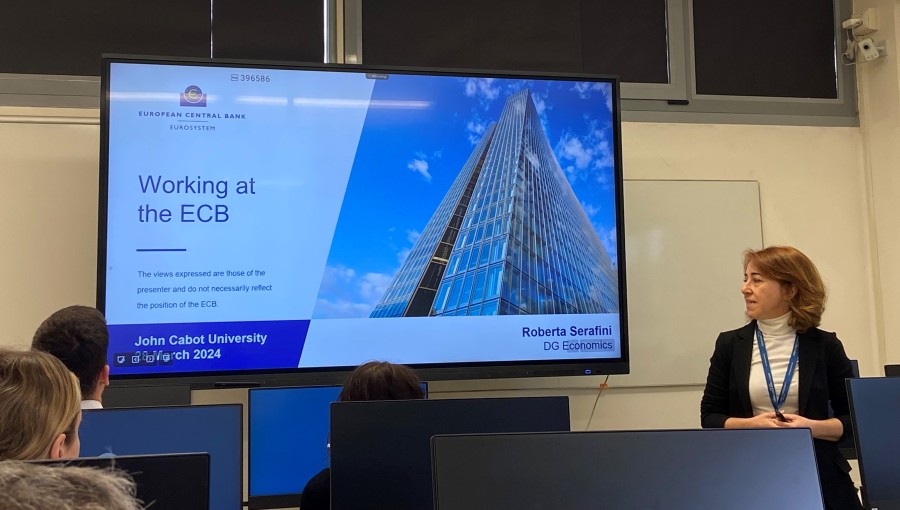Working at the European Central Bank: JCU Welcomes Roberta Serafini
On March 28, 2024, John Cabot University had the pleasure of hosting a seminar led by Roberta Serafini, Principal Economist at the European Central Bank (ECB), in Professor Sergio Scicchitano’s Econometrics class. The seminar provided invaluable insights into the ECB’s structure and tasks, and presented pathways for aspiring economists.

Understanding the ECB: A Historical Overview
Serafini began by illustrating the ECB’s journey, highlighting key milestones such as the formation of the European Monetary Union (EMU) in 1988, the Maastricht Treaty in 1992, and the establishment of the ECB in 1998. Notably, the birth of the Euro currency in 1999 marked a significant step towards financial integration in Europe. She also emphasized the pivotal role played by the Single Supervisory Mechanism (SSM) since its establishment in 2013.
Core Responsibilities of the ECB
Central to the ECB’s mandate is the pursuit of price stability, achieved through a targeted inflation rate of 2%. Serafini explained the governance structure of the European System of Central Banks, which includes the General Council and the Governing Council, along with the ECB Executive Board.
Pathways to Joining the ECB
For students aspiring to a career at the ECB, Serafini outlined various options, accompanied by tips to enhance their chances of securing a position. Opportunities include traineeships, graduate programs, and direct applications for positions such as research analysts or economists. She explained that by working at the ECB, one could get experience spanning areas such as banking supervision, statistics, economics, and research.
Insights into Working at the ECB
Drawing from her own experience, Serafini shed light on the day-to-day operations within the Directorate General for Economics (DGE). She outlined the structure of the DGE and highlighted its research focus areas.
A Glimpse into Cutting-Edge Research
Serafini then presented a research paper crafted by the DGE in collaboration with central banks across Europe. The paper, centered on aggregate productivity dynamics, showcased the ECB’s commitment to producing accurate and reliable research to inform policy decisions. Serafini emphasized how such research plays a vital role in shaping targeted policy interventions.
As John Cabot University continues to foster academic excellence and professional development, events like these serve as great opportunities for students to explore and engage with real-world economic phenomena.
(Paolo Clemente Resta)





